The Parts of a Feather and How Feathers Work
The outermost masking on the physique of a vertebrate is the dermis. Fish, amphibians, reptiles, birds, and mammals are all wrapped on this defending layer. The dermis protects in opposition to scratches and abrasion, the climate, and microorganisms with harmful intentions. It moreover varieties a barrier that holds moisture contained within the physique.
New cells type deep throughout the Dermis and are pushed outward as they age. Older epidermal cells in our pores and pores and skin type the stratum corneum. This means the “layer product of horn.”
Individuals couldn’t have horns rising out of our skins, nonetheless we do have hair and fingernails, which might be product of the an identical stuff as cow horns, rhino horns, and so forth. And we get callouses, which might be type of little horn-like points projecting from our pores and pores and skin.
Totally different related epidermal constructions in mammals embody claws, hooves, and the baleen of whales.
Scales in reptiles, along with these on chook legs and ft are moreover epidermal constructions. Certain, I lumped birds in with the reptiles. Don’t forget that birds are dinosaurs, and naturally, dinosaurs are reptiles. Nevertheless birds are nonetheless dealt with by most scientists as belonging to their very personal class, Aves. Probably someday we’ll revise our classification packages, our taxonomies, to further appropriately mirror the reptilian nature of birds. I should degree out that fish scales are derived from the dermis—a deeper layer of the pores and pores and skin—not the dermis. So that they don’t share the an identical origin as these totally different constructions we’re talking about.
Pterosaurs, these flying reptiles of the Mesozoic interval, had some hair-like and feather-like points adorning their skins. It’s nonetheless not sure whether or not or not these constructions shared a typical origin with chook feathers. For the file, Pterosaurs are positively not the ancestors of birds. They aren’t even technically dinosaurs.
And ultimately, we come to chook beaks and feathers. These are however further inventive expressions of the dermis in animals. Scientists have confirmed that feathers, hair, horns, and so forth. all develop from the an identical, comparable embryonic tissue. They’re type of elaborations of the an identical theme. Feathers are positively most likely probably the most elaborate of these elaborations.
Keratin Proteins
The raw supplies that pure selection has molded into all these jazzy pores and pores and skin adornments is keratin. Keratin is a protein that accumulates throughout the ol’ stratum corneum.
Keratin is a polymer. It shares some properties with man-made plastics, which might be moreover polymers. Try your fingernail, which is product of keratin.
There are two predominant kinds of keratin in animals: alpha and beta. Alpha keratins are present in all vertebrates. That’s the type of keratin protein in hair and totally different totally different mammalian constructions.
Beta keratins, nonetheless, are current in solely reptiles and birds. They type a harder, tougher supplies than alpha keratins. Beta keratins make reptile claws and scales, the outer layer of turtle shells, chook beaks, and feathers.
Okay, now let’s try the development—the construction—of a feather. Thankfully, you already know the blueprint of a typical feather. Let’s see if we’re in a position so as to add some component to your present psychological image.
For starters, we have now now a central shaft that varieties the first axis of the feather. The shaft is stiff however moreover elastic: it bends when drive is utilized nonetheless springs once more to its genuine kind when the drive is eradicated.
The comparatively thick base of the shaft is gap. This half often known as the calamus and it anchors the feather throughout the pores and pores and skin of a dwelling chook. The rest of the central shaft is the rachis. In distinction to the opening calamus, the rachis is powerful. It tapers to a advantageous degree on the tip of the feather.
Spreading out from either side of the shaft are the vanes. These are broad, flat constructions that sort a single two-dimensional airplane. The vanes look like type of sturdy, nonetheless you notice from experience that they’re really made up of many, tiny, hair-like constructions, working in parallel. We identify these barbs. They division off of the shaft and are tightly packed collectively, facet by facet.
Now let’s zoom in to try the microscopic building of the barbs. We’re getting into into the territory of stuff you presumably can’t see by merely holding a feather and gazing it.
We see the barbs working parallel to at least one one other, row after row. Nevertheless now we see that each barb has its private little branches coming off two sides. These are the barbules. Barbs division off the central shaft and barbules division off the barbs.
Proper right here’s the place it should get really attention-grabbing. Zooming in further you presumably can see that each tiny barbule has teensy weensy hooks coming off of them at intervals. These hooks—known as barbicels or hooklets—seize onto the next barbule over, the one nearer to the feather tip. The hooklets carry out to keep up the barbs zipped collectively good and tight. In reality, this interlocking mechanism really acts like a zipper. Grappling hooks moreover come to ideas.
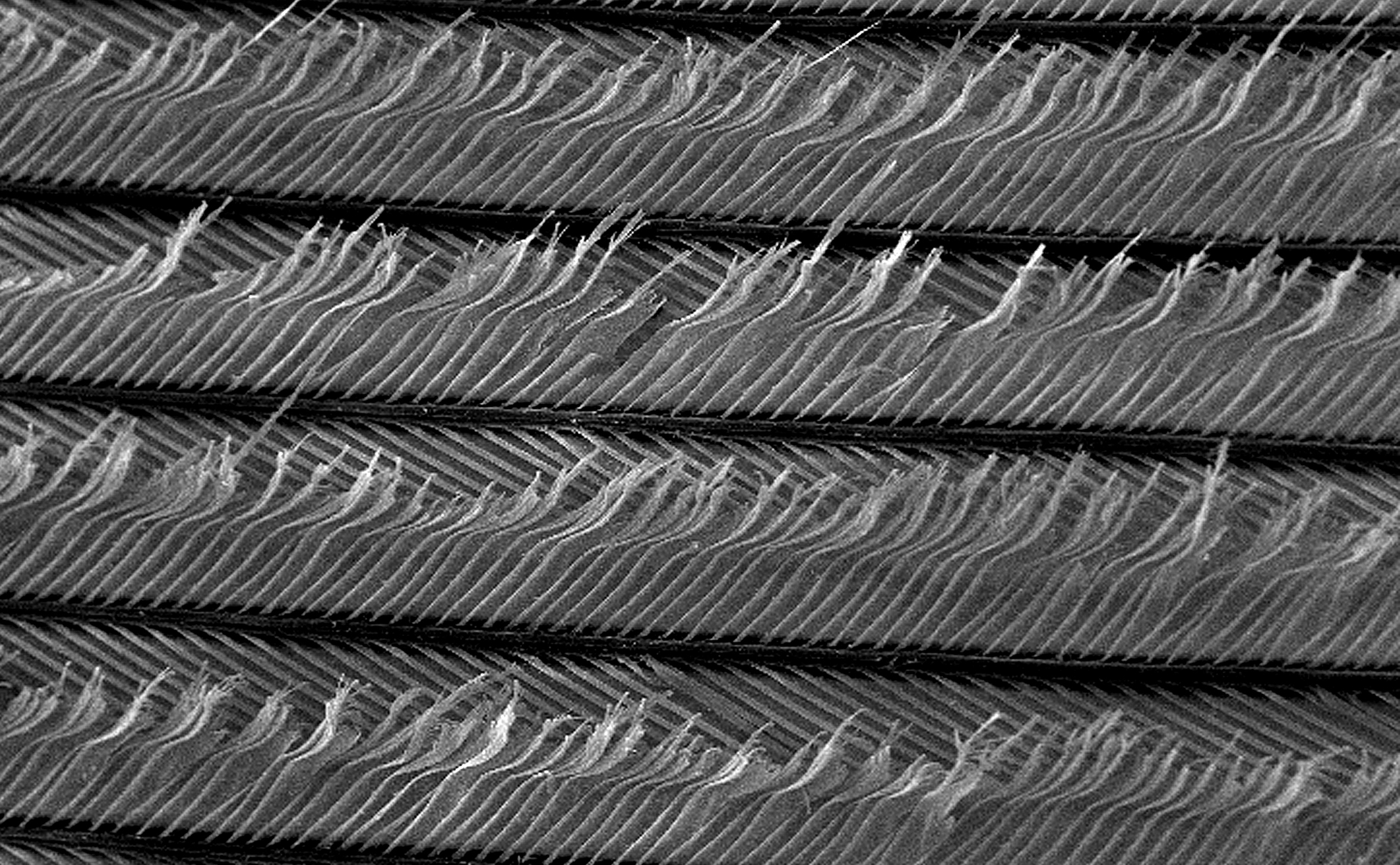
Tug on the vane and you will see how the barbs cling collectively. Nevertheless then, beneath enough stress, they instantly “unzip.” The barbs may be smoothed once more collectively between fingertips, letting the hooklets work their magic and the opening is sealed up, and the vane is total as soon as extra.
That is among the many predominant points birds are doing as soon as they preen. They use their funds or ft to zip collectively gaps between the barbules of their feathers.
So that’s how a typical feather is put collectively. You’ve acquired a central shaft which is break up into the calamus and the rachis. Barbs are branches coming off the shaft. They type the vanes. Each barb has its private central axis with barbules branching off on two sides. And the barbules have hooklets.
Crawling spherical throughout the branches of this feather forest are some spooky ectoparasites: feather lice, louse flies, and feather mites. Birds ought to address these creepy crawlies to keep up their feathers in good situation. I’ll go into ectoparasites in the end in the end.
Feather types may be divided into two broad lessons: Pennaceous and Plumulaceous. So far I’ve been describing the standard pennaceous feather.
Although plumulaceous feathers have a whole lot of the same components, they don’t have distinct vanes. They’re fluffy and largely shapeless. It’s as a result of the barbs and notably the barbules are prolonged and actually versatile. And, importantly, the barbules don’t have hooklets. Down feathers are plumulaceous. We’ll get to down and the other types of feathers in solely a second.
Follicles and Pterylae
Sooner than we do that, I must level out follicles. A follicle is the actual building on a chook’s pores and pores and skin that produces a feather. These are the bumps you’ve seen on a raw, plucked rooster. Specialised cells throughout the follicle produce the keratin that fuses collectively proper right into a feather.
In distinction to hair follicles in individuals, follicles on birds are organized neatly and repeatedly all through the pores and pores and skin. Feathers, usually, ought to be in actual areas on a chook’s physique, so that they overlap just so and serve their quite a few options efficiently.
Follicles are grouped into distinct patches known as pterylae. Between these pterylae are bare patches with out follicles and as a result of this truth with no feathers. You infrequently see these bare patches on a dwelling chook on account of feathers from the neighboring pterylae cowl them up.
Counting on the sort of chook and its dimension, it’d want an entire of only one,000 feathers on its physique or it’d want as a lot as 25,000. Hummingbirds are on the low end of this spectrum; swans are on the extreme end.
Contour Feathers
Contour feathers are most of what you see on the ground of a chook’s physique. They provide a chook its attribute kind, it’s contours. The silhouettes of naked rooster and a very feathered one are very completely totally different, as I really feel you presumably can picture. It’s contour feathers that fill throughout the empty areas to spherical out and streamline the chook’s kind.
A typical contour feather has a pennaceous half, with vanes and the entire substructures. It may actually have a portion near the underside that is plumulaceous. The pennaceous portion—the outer portion—of these feathers overlap like fish scales or roof shingles.
Tiny muscle tissue throughout the follicle protect a contour feather in its appropriate orientation. These muscle tissue moreover allow for some administration of feather place. Contour feathers may be raised or lowered voluntarily—usually as total tracts of feathers, not individually. Birds often fluff up or compress their plumage to regulate their physique temperature. Nevertheless there are totally different causes they switch their feathers. As an example, a chook might elevate its contour feathers to make itself look bigger and additional menacing to threaten a rival or a predator.
Flight Feathers
Flight feathers are specialised contour feathers of the wing and tail. They’re usually an important and stiffest feathers on a chook, and they also’re almost solely pennaceous in building.
The size, stiffness, and shapes of flight feathers all contribute to help a chook overcome gravity and take to the air.
Flight feathers of the wing are known as remiges. The remiges of the outer wing are known as the primaries, and other people of the inside wing are the secondaries. Each of these flight feathers has asymmetrical vanes. The vane on the forefront, coping with into the wind, is narrower than the vane on the trailing edge. This allows the feather to withstand the drive of dashing air all through flight.
The tail feathers are known as rectrices. They usually have symmetrical vanes. They type the attractive fan type of the tail. The two central rectrices are anchored to the tailbone, which often known as the pygostyle.
Flight feathers on the wing, the remiges, are associated on to a chook’s arm bones. This differs from totally different feathers, which might be anchored throughout the pores and pores and skin solely. The attachment elements of the secondaries to the ulna bone are known as quill knobs. They’re seen as little bumps on the bone.
Down Feathers
Down feathers are hidden beneath a chook’s coat of contour feathers, a minimal of in adults. A down feather is solely plumulaceous. It has each a extremely fast shaft or none the least bit.
There are a variety of sorts of down. Natal down is what many baby birds are born with. It’s most blatant in precocial chicks, these which may be ready to tear as rapidly as they’re born, like chickens and geese. It’s possible you’ll picture the mild fuzz that covers these little dudes. As these chicks age, contour feathers develop out of the an identical follicles that produced the natal down.
Physique down is the on a regular basis down of grownup birds. A physique down feather grows from a specialised follicle that makes solely the form of feather.
Then we have now now powder down. These are pretty attention-grabbing feathers. A powder down feather grows repeatedly all by way of a chook’s life and is not molted. It breaks apart on the tip, disintegrating proper right into a advantageous mud of keratin particles. This powdery substance works its method into the whole plumage of a chook. Although ornithologists don’t know the carry out of powder down, it’s probably involved in repelling water or maybe safety in opposition to parasites.
Solely birds of positive households have powder down feathers. These embody pigeons, parrots, herons, and a few others.
Semiplumes
Semiplume feathers are one factor halfway between a down feather and a contour feather. The barbules on a semiplume feather lack hooklets. So semiplumes have a lot much less building than contour feathers, nonetheless they aren’t pretty as amorphous as down.
Bristles
These are specialised feathers that look to us further like stiff hairs. Most bristles lack barbs; some have various barbs near the underside. We see bristles completely on the heads of birds.
Some good examples are the glamorous eyelashes of some hornbills and the Secretarybird in Africa. Moreover, members of the nightjar family Caprimulgidae have well-developed bristle feathers surrounding their beaks.
Filoplumes
And our final feather kind is the filoplume. These, too, are hairlike, nonetheless they’re further slender. Some filoplumes have a tiny tuft of barbs on the tip. Filoplumes are scattered throughout the plumage, hidden among the many many contour feathers. They hook up with nerves throughout the pores and pores and skin and are thought to have a sensory carry out. Filoplumes allow a chook to detect air actions and likewise movement inside their plumage.

Flight
Feathers are critically important for flight in birds. The flight feathers type prolonged, broad surfaces which have the bodily properties needed to generate carry and thrust. They’re lightweight and stiff, however moreover versatile in merely the becoming method.
Contour feathers of the arm are moreover great important in giving the wing its airfoil kind, identical to the wing of an airplane. Contour feathers clear a chook’s kind to make it further aerodynamic common.
Don’t forget that the rectrices, the tail feathers, are moreover flight feathers. The tail itself has a kind that provides carry and maneuverability in flight.
Insulation
Birds are endotherms like us. In several phrases, they’re warm-blooded. So, like us, they need to protect their physique temperatures inside a slender range. Most birds have a physique temperature spherical 106℉ (41℃).
Feathers current the insulation a chook needs to cut back heat loss throughout the chilly. Down is known for its wonderful effectivity as insulation. Totally different feather types moreover contribute to temperature regulation, too. Contour feathers have their fluffy, plumulaceous bases and they also defend a chook’s pores and pores and skin from photograph voltaic radiation. Semiplumes moreover current some insulation.
The woolly building of down is constructed up from a tangle of prolonged, mild barbules. Inside this matrix, on the microscopic stage, air strikes slowly. It’s going to get caught up in all these barbules. So air warmed by a chook’s scorching little physique stays trapped throughout the down feathers, close to the pores and pores and skin.
That’s how penguins may be cozy throughout the frigid waters of Antarctica, and the way in which migrating Bar-headed Geese can fly at 29,000 ft. As far as I do know, human engineers nonetheless haven’t provide you with a synthetic insulation that’s as lightweight, compressible, and setting pleasant as chook down. I wager they’ll decide it out in the end.
Until then, there’s nonetheless an unlimited market for bird-down for insulation. There’s a problem with this that I should level out. Some down is plucked from keep birds, which is cruel and horrific. This type of harvest is prohibited throughout the US, Canada, and most of Europe. However it certainly’s approved in numerous totally different nations. Some sources say that only one% of the world’s down present comes from live-plucked birds. Totally different sources say it’s as a lot as 80%. Some companies like IKEA and Patagonia now guarantee that their down does not come from sources that live-pluck birds.
It’s easy to argue that nearly any provide of down—live-plucked or not—contains some inherent cruelty. So, my bird-loving buddy, I invite you to current this some thought sooner than searching for a down-filled product.
Nevertheless there could also be one provide of down that’s delightfully free of cruelty. Widespread Eiders are beautiful, seafaring geese of the North Atlantic. Residing in that ambiance, you presumably can take into consideration they’ve some pretty hard-core down.
Female Eiders pluck a couple of of their down feathers to line their nests, which is smart. They aren’t distinctive on this conduct, since many alternative water birds moreover use down of their nests. Nevertheless eiderdown is further warmth and mild.
For a whole bunch of years, people in Iceland have been harvesting this Eider down from nests. Nevertheless they take the down solely after the nests have been abandoned by the birds. The geese current up 12 months after 12 months to some farms, waddling out of the ocean to assemble their nests. There’s a type of symbiotic relationship between eiders and their farmers: the individuals current shelter and security, the geese current the fluffy objects. Harvesting and processing Eider down is form of a course of. So it ought to return as no shock that it’s great pricey. An eiderdown quilt can worth 1000’s of US {{dollars}}.

Waterproofing
Feathers current most birds with a water-proof—if not water-proof—outer masking. If down acts like a puffy insulating parka, the contour feathers are identical to the rain jacket.
The microscopic building of the barbs and barbules in contour feathers provides them their water repellent property (watch). Tiny air areas between barbs set off water to type spherical beads that merely roll off. Like water off a duck’s once more, correct?
Birds scenario their feathers with oil produced by the preen gland, moreover known as the uropygial gland. This gland sits merely above the underside of a chook’s tail feathers, on its once more. A chook runs its bill all through the gland to assemble some oil, then rubs the oil all through its plumage. The oil is type of like a hair- conditioner for feathers. It retains them in good working order and helps protect their water repellency.
Present
Certainly one of many points we love most about chook feathers is how vibrant they’re. The plumages of quite a few species are jaw-droppingly stunning. They combine colors in methods during which even a gifted artist might suppose would under no circumstances work collectively.
To some extent, it’s solely a quirk of biology and evolution that we individuals suppose birds are pretty. We an identical to sensible colors. Vibrant birds aren’t meant to make us fully happy, although they do. As you notice, the vivid colors of chook feathers carry out as a present, to totally different birds, largely.
Species Recognition
Distinct plumage patterns—vibrant or not—are useful to birds in species recognition. It’s commonplace for various chook species in a habitat to look pretty comparable. It’s important for a chook to know which of its neighbors are members of the an identical species. There are a pair causes for this.
One is that you just don’t must waste your treasured time and vitality courting a member of 1 different species, attempting to win their affection. They’ll most likely merely blow you off and in addition you’ll be disregarded throughout the chilly. And within the occasion you merely happen to realize success in mating with one different species…? Properly, your hybrid offspring ensuing from the mating are susceptible to type of suck. They’ll have comparatively low well being by the use of pure selection. That’s one rationalization for plumage variations in intently related chook species that share a habitat.
It’s moreover good to know who’s a member of your particular person species on account of these guys are susceptible to be your main rivals for restricted sources. They eat the an identical meals as you, they want the an identical high-quality mates, and they also use the an identical nesting web sites. It is important to protect your eye on them. One different species with comparable, nonetheless distinct plumage most likely makes use of completely totally different sources, so that you presumably can maybe merely ignore them.
Proper right here’s an occasion. There are two chickadee species that I see in my yard and shut by woodlands: The Black-capped Chickadee and the Chestnut-backed Chickadee. That’s in Oregon, throughout the US.
Superficially, these species look very comparable. They’ve white cheeks, black caps and throats, and gray our our bodies and wings. Nevertheless with even a quick assertion, we’re capable of see that the Chestnut-backed Chickadee is aptly named. It has a rusty pink patch of feathers that wraps spherical like an lovable little vest. That’s the apparent distinction, from our human perspective.
Regardless that these birds flit spherical within the an identical fundamental house and do cross paths, they forage in a number of kinds of bushes and have completely totally different nesting habitats.
When a Black-capped Chickadee sees a chickadee-shaped chook on a close-by division, it could presumably safely ignore the other chook as quickly because it sees that little pink vest.
Mate Attraction
In all probability probably the most broadly understood use of feathers as a present is for mate attraction. We’re all conscious of the very good reveals of male peacocks and birds of paradise. Plenty of the sensible coloration we see amongst male birds is the outcomes of female choice throughout the technique of sexual selection.
A number of kinds of feathers have been co-opted for the purpose of mate attraction by the use of sexual selection. Contour feathers that current a chook’s defending outer coat have, in numerous species, developed into elaborate and/or vibrant constructions used for present.
As an example, the Ruff is an enormous shorebird, a member of the sandpiper family. It breeds all through northern Eurasia. Breeding males have elongated, conspicuous contour feathers on their necks. They seem like they’re carrying a ruff… you notice these silly, white collars that Shakespeare and his buddies wore in Elizabethan situations? Male Ruffs—the birds—use their extraordinary neck feathers to impress females.
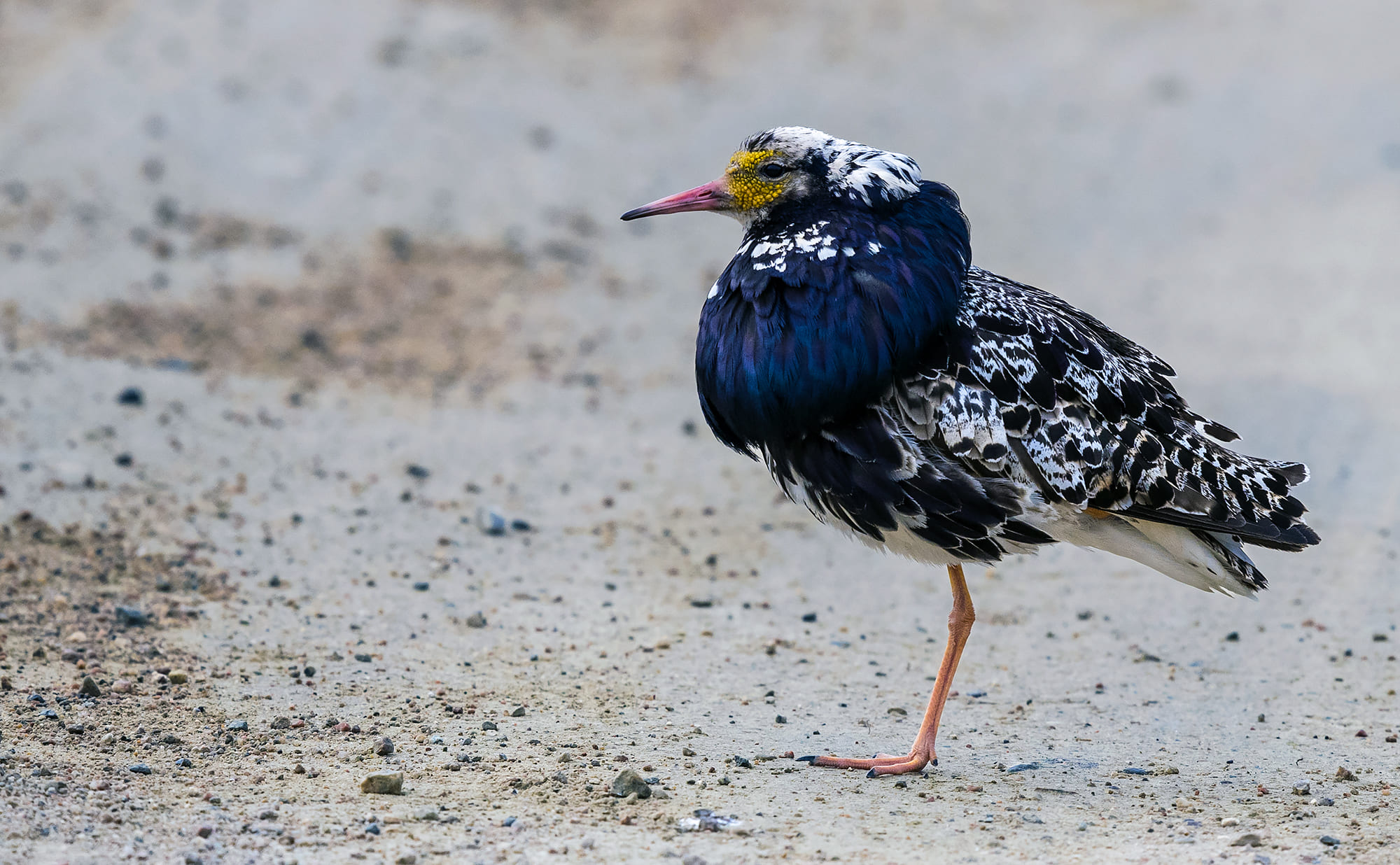
Flight feathers of the wing are so important for his or her main carry out that they aren’t as often modified by sexual selection into weird constructions. Nevertheless they’re going to really be vibrant for the purpose of mate attraction.
Tail feathers, then once more… oh boy are there so some methods these have been shaped into very good reveals for attracting mates. Turkeys, lyrebirds, widowbirds, hummingbirds, paradise-kingfishers, paradise-flycatchers, the Scissor-tailed Flycatcher… There’s a prolonged guidelines of species whose males have prolonged, bedazzled tail feathers.
Seen vs Auditory
The reveals we’ve been talking about are seen reveals. On the entire, birds have good eyesight. Study my article about imaginative and prescient in birds within the occasion you’d want to research further about that.
Birds can see further colors than we’re capable of, along with some throughout the ultraviolet end of the spectrum. It seems many males have patches of feathers that shine brightly in UV delicate, and that’s partaking to females.
Some birds moreover use feathers in auditory reveals for mate attraction. Males of some hummingbird species, as an illustration, make present dives directed at a perched female spectator. Air transferring fast over the male’s tail feathers produces a loud whistling sound on the end of the dive. That’s meant to accentuate the impressiveness of the overall present. Sounds produced by feathers this fashion are known as sonations.
The Membership-winged Manakin (Machaeropterus deliciosus) has an incredible present that features feather sonation. This small, egg-shaped chook lives in mossy Andean forests of western Ecuador and Colombia. The males have a scarlet cap, brownish-red our our bodies, and black wings.
Males present for females by elevating their wings over their backs and vibrating them rapidly. The wings vibrate 107 situations every second, which is even before a hummingbird flaps its wings in flight.
And it’ll get even cooler: various of the Membership-winged Manakin’s secondary flight feathers, on the inside wing, have uniquely thickened shafts. Whereas the wing is being vibrated, these club-shaped feathers knock in opposition to at least one one other to supply a loud ting sound.
Higher than 20 totally different manakin species make noises with their wings in courtship reveals. The Membership-winged Manakin has merely taken this to a implausible extreme.
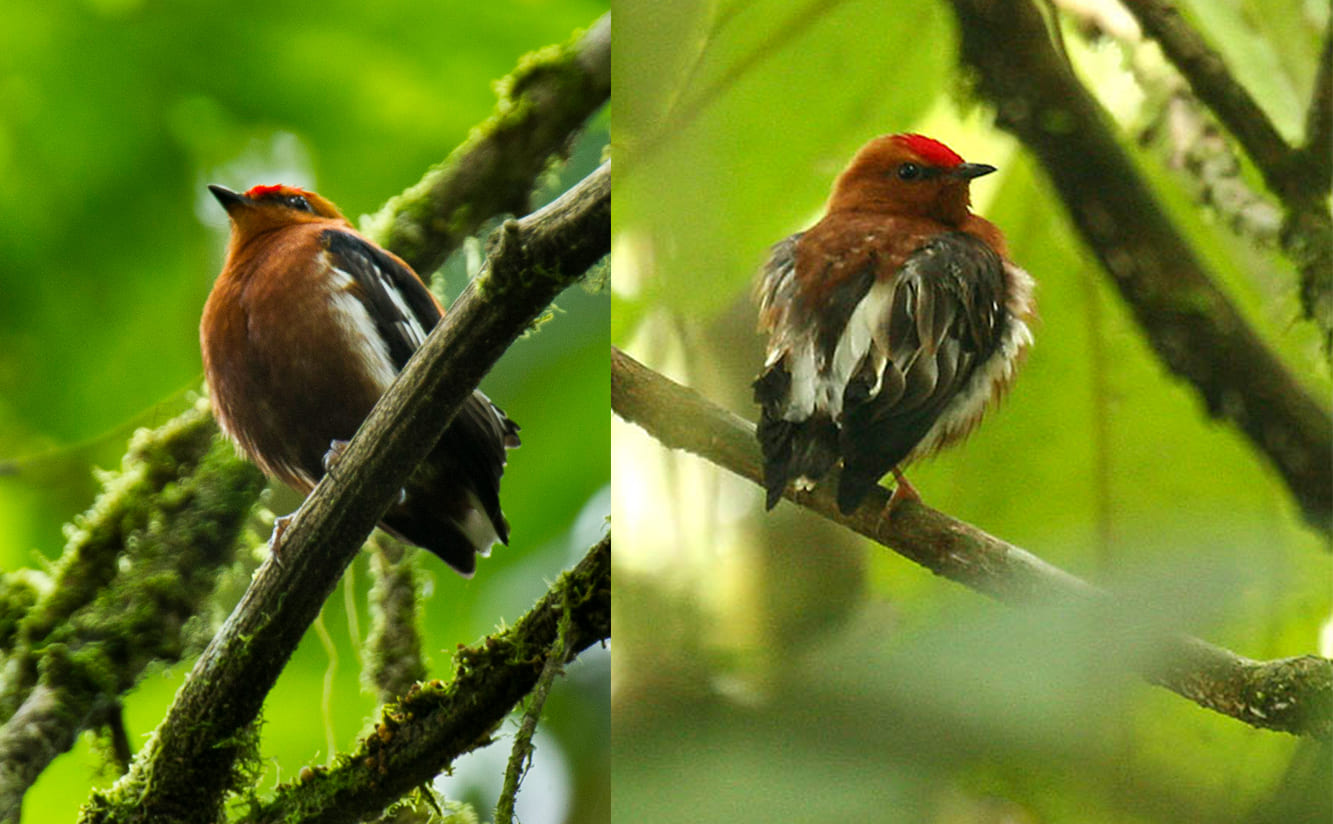
Camouflage
Being vibrant and conspicuous has its advantages, as we’ve talked about. Nevertheless many birds use feathers to understand the opposite influence. They use them for camouflage.
Birds are tasty little bundles of meat which may be targeted by many predators. Ground-nesting birds or individuals who merely spend a wide range of time on the underside are notably inclined. So birds like grouse have plumages that current distinctive camouflage. Females of many sorts of birds are usually a lot much less conspicuous and additional camouflaged. That is wise for species the place the female is the one who spends most of the time on the nest.
Examples of feather patterns and coloration providing great camouflage are fairly a couple of. Among the many most spectacular are found amongst various households of nocturnal birds. The frogmouths of southeast Asia and Australia, the potoos of the neotropics, and loads of owls use their feathers to mimic tree branches or tree bark. These birds are energetic at night and rest on perches by way of the day. To combine in, they merely sit nonetheless, shut their large eyes, and assume a posture that allows them to look an identical to a bit of picket.
Birds in these three households are normally not intently related. Similarities throughout the appearances and behaviors of frogmouths, potoos, and owls are largely the outcomes of convergent evolution. They share the identical ought to be camouflaged whereas sleeping on their daytime roosts. Pure selection has endowed all of them with feathers that look convincingly like tree bark.
So these are the first makes use of of feathers: flight, insulation, present, and camouflage. There are a variety of various, further obscure methods during which birds use feathers, nonetheless we’ll go away these for an extra day.

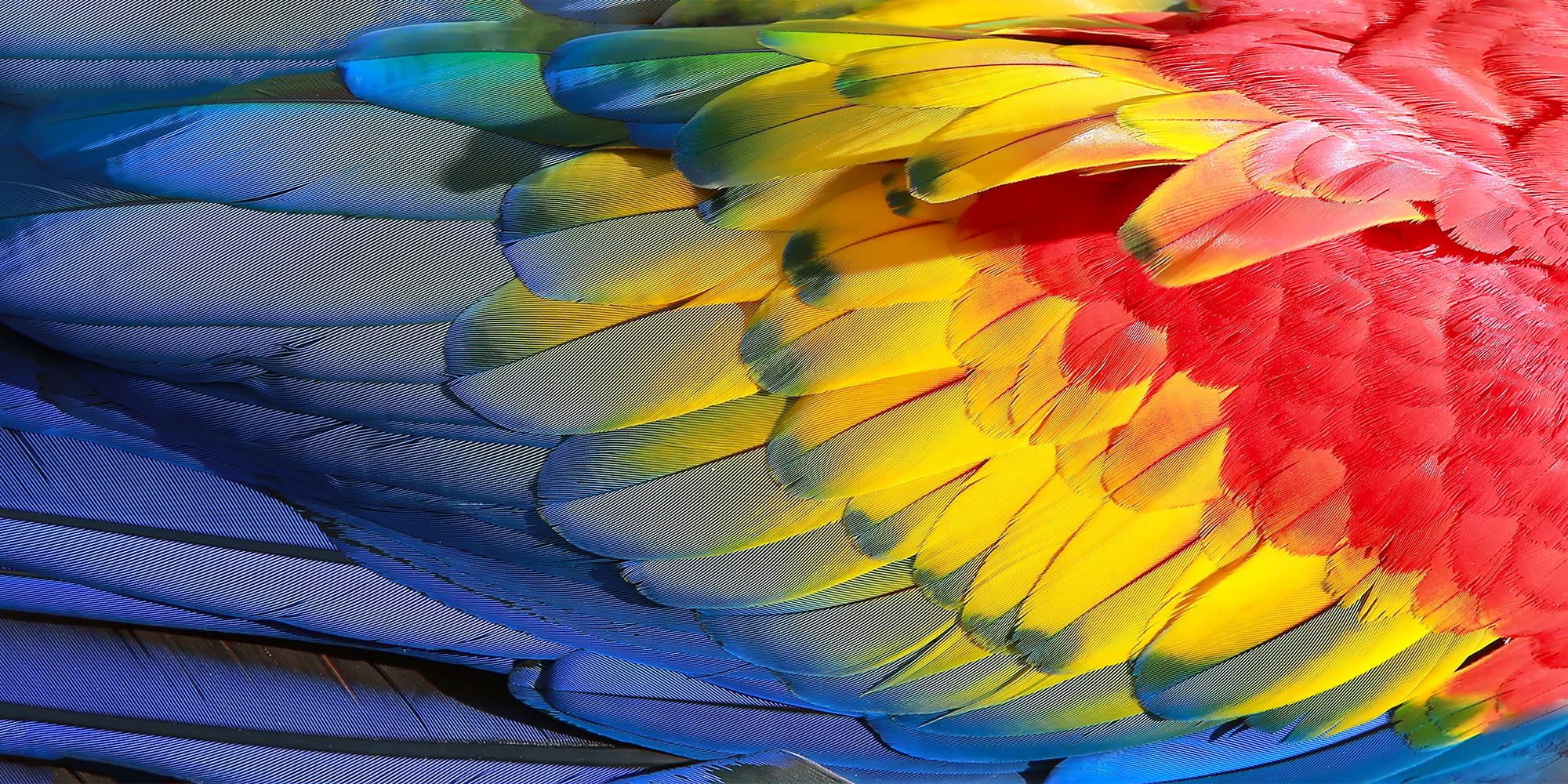
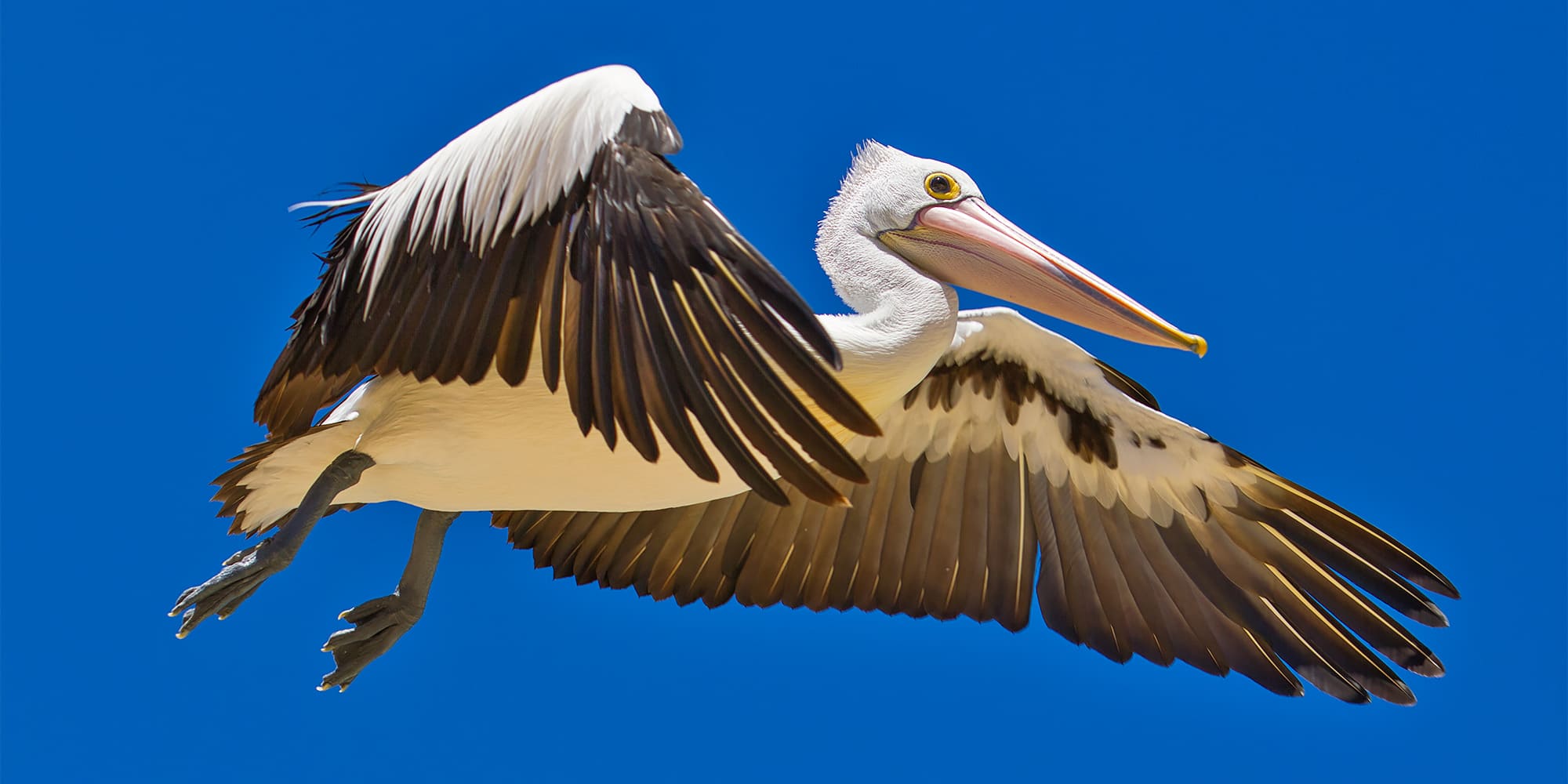
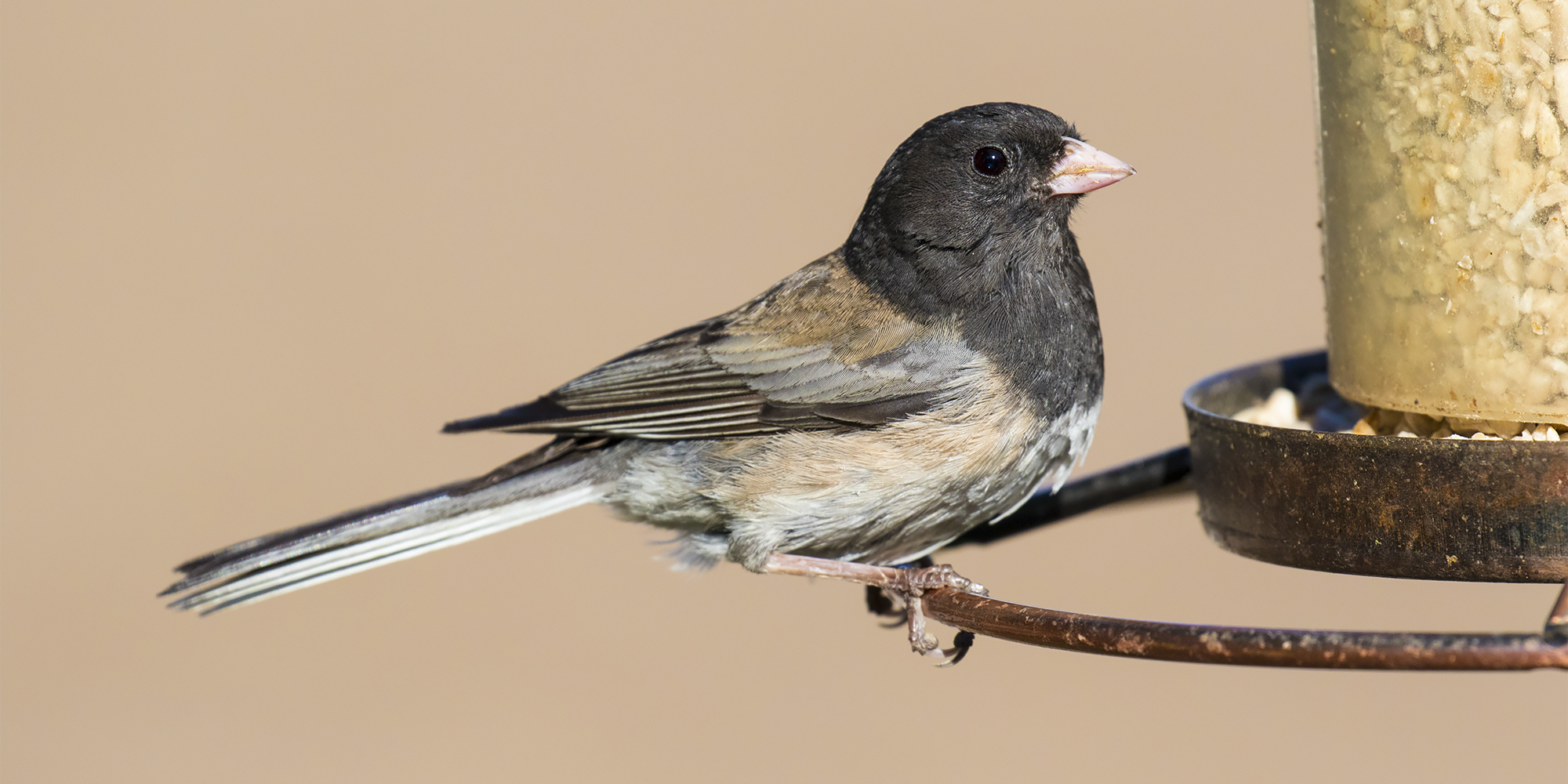
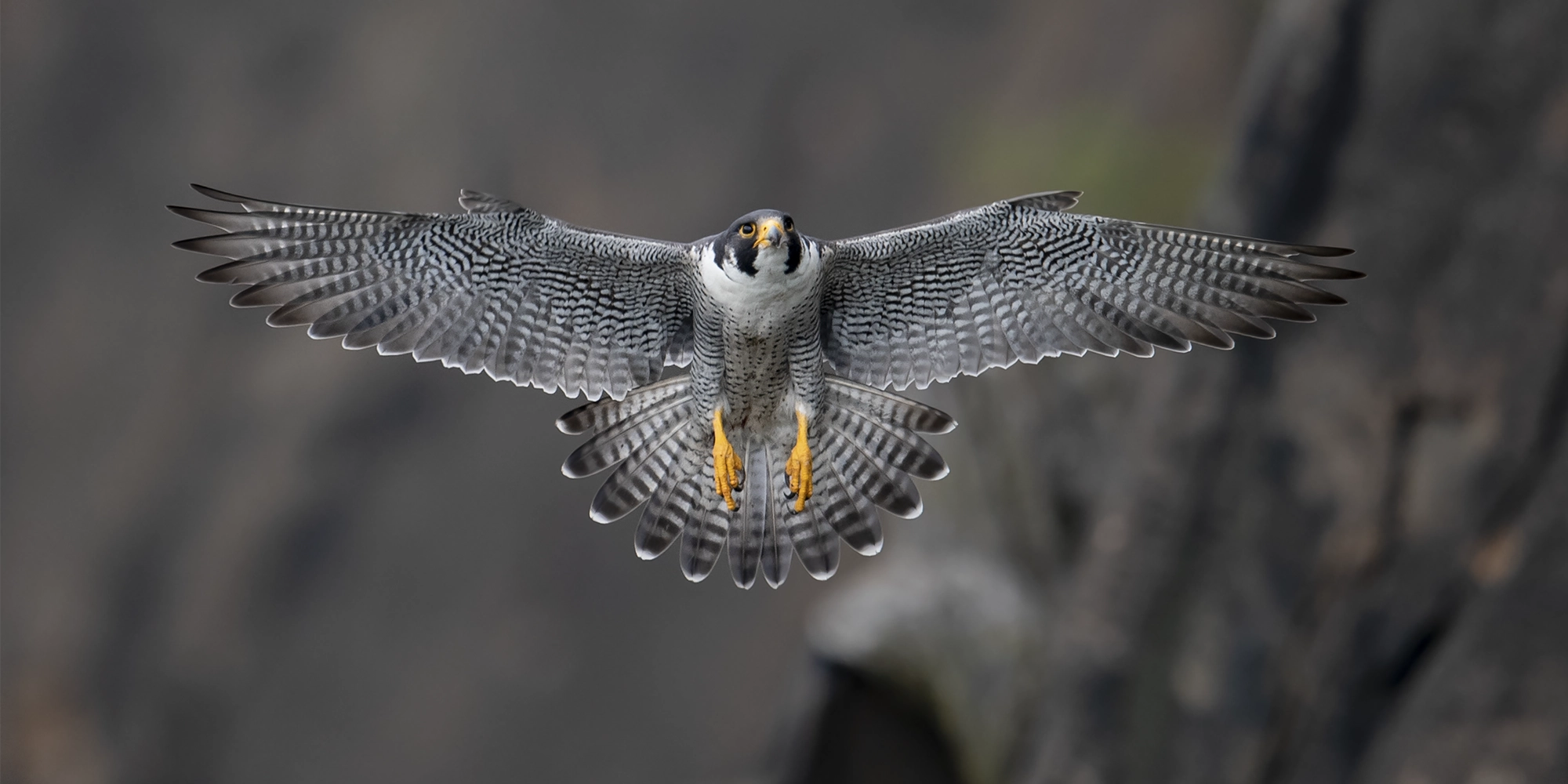

Post Comment